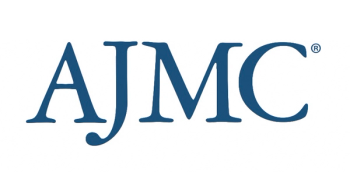
Type of Insurance Drives Emergency Room Visits, AJMC Study Finds
Being uninsured has long been linked to a higher likelihood of trips to the emergency room. But a new study in The American Journal of Managed Care finds that the type of health coverage can also affect whether a person goes to the ER for non-emergent care.
Type of Insurance Drives Emergency Room Visits, AJMC Study FindsFOR IMMEDIATE RELEASEMarch 31, 2015
PLAINSBORO, N.J.—Can the type of health coverage affect the likelihood of whether a person seeks care in the emergency room? Apparently it can, based on results of a study published this month in The American Journal of Managed Care. For the full study,
The study, led by Weiwei Chen, PhD, analyzed a year’s worth of ER records—covering more than 2 million visits—to show that having public insurance, such as Medicaid, made a person more likely to head to the ER for conditions that could have been treated in a primary care doctor’s office. Researchers used the 2008 Tennessee Hospital Outpatient Discharge Data.
Excluding visits from out-of-state residents (who presumably had no access to their primary care physician) researchers categorized the visits based on diagnostic codes using the New York University ED Algorithm, an accepted classification system that identifies and tracks visits based on whether not they were urgent or “primary care sensitive,” which means that earlier treatment in a primary care setting could have prevented the need for emergency room care.
As expected, lack of insurance was associated with the highest probability of going to the ER with a non-urgent or primary care sensitive condition. However, those with Medicaid were more likely to visit the ER on a nonurgent basis than those with private coverage. In fact, obtaining Medicaid after being uninsured could be associated with an increase in nonurgent and primary care sensitive visits, while a conversion to private coverage could be associated with a decrease. The authors discussed prior studies that explore whether the newly insured have different characteristics from the rest of the population, but did not reach a firm conclusion on why this occurs.
The authors note that the results have important implications for the impact of the Affordable Care Act, as the newly insured may at least temporarily have a high number of visits to the ER due to Medicaid expansion. Some states, under waivers with the Centers for Medicare and Medicaid, have opted to let the population between 100% and 138% of the federal poverty line apply federal dollars toward the purchase of private coverage on the exchanges.
About the Journals
The American Journal of Managed Care celebrates its 20th year in 2015 as the leading peer-reviewed journal dedicated to issues in managed care. Other titles in the franchise include The American Journal of Pharmacy Benefits, which provides pharmacy and formulary decision-makers with information to improve the efficiency and health outcomes in managing pharmaceutical care, and The American Journal of Accountable Care, which publishes research and commentary on innovative healthcare delivery models facilitated by the 2010 Affordable Care Act. AJMC’s Evidence-Based series brings together stakeholder views from payers, providers, policymakers and pharmaceutical leaders in oncology and diabetes management. To order reprints of articles appearing in AJMC publications, please call (609) 716-7777, x 131.
CONTACT: Nicole Beagin (609) 716-7777 x 131
nbeagin@ajmc.com
Newsletter
Stay ahead of policy, cost, and value—subscribe to AJMC for expert insights at the intersection of clinical care and health economics.




